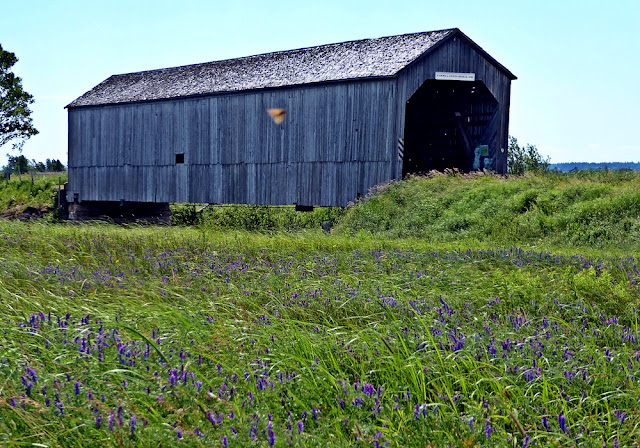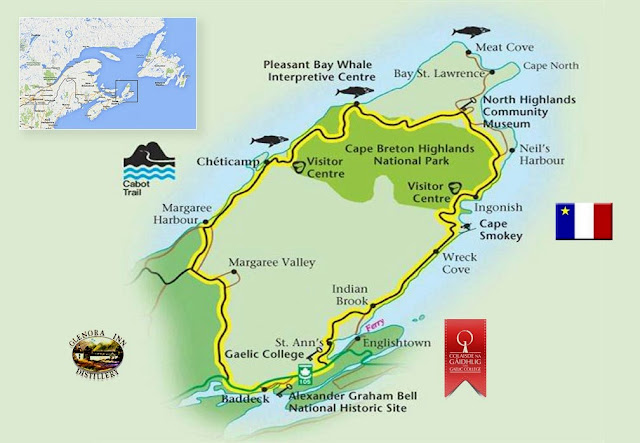Bay of Fundy Tides and Amazing Formations
Monday, July 10, 2017
We had just one activity today, an excursion to Hopewell on the coast at the top of the Bay of Fundy. This is the place where there are the highest tides in the world, and, on the beach, amazing geology because of the tides.
We were met by a docent at the interpretive center where we had a lecture on tides and the particular geology of the Bay of Fundy which makes for such incredible tides. We also learned, or re-learned, factors which create tides, primarily the alignment of the sun and the moon. The very short story is that the very large bay is funnel-shaped, ending with the shallow narrow part of the bay which has normal tides of 40+ feet and when the sun and moon are properly aligned, they can reach 50+ feet. Rivers reverse their flows, and there is even a reverse waterfall. The volume of water in one tidal cycle is estimated at 160 billion tons, greater than the combined daily flow of all the rivers of the world.
Our docent said we were here at the best time, about halfway into an approaching high tide. On an ordinary day the water is rising at more than one foot every 10 minutes in mid-cycle, and on a big day it rises a foot every 5 minutes. The beach has extensive flats, and the movement of the water was easy to see. We began our beach walk on a narrow strip of dry land which had been quite wide while we had a short lecture, and was narrow when we walked. It was gone a few minutes later as the water rose:
There are amazing geologic formations. The formations are made of sand, mud and rocks which were created by rain, streams and glaciers. Over many millennia sediments accumulated and compressed to form two types of solid rock. One is stones and pebbles cemented into place by hardened silt, and the other is formed of compressed sand (sandstone). They erode differently, leading to these formations:
There are massive growths of a certain variety of seaweed which have clusters of clear gel goo-filled structures on them:
We were told that squeezing the goo out of them and using it as a skin lotion would result in a Fountain of Youth experience. I remain skeptical, but we tried; at least my skin is still intact.
We ended our beach walk as the tide was rising to meet us, and left Hopewell, going to the tiny town of Alma for lunch. We then returned to Moncton, passing by one of the few remaining covered bridges in New Brunswick, the Sawmill Creek Bridge:
Tomorrow off to Prince Edward Island, the smallest province in Canada.









I recognize that seaweed! We had it on the beaches in Massachusetts, and we used to pop the little oval-shaped protrusions. Thanks for explaining why the skin on my hands is so lovely! :) But we had nothing like those tides and swirling rock formulations. Wow!
ReplyDelete